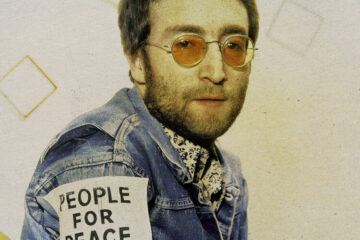None of the early rock and rollers wanted to write anything too sophisticated. When looking at artists like Chuck Berry and Little Richard, most of their beloved classics revolved around a three-chord vamp and relied on the energy they brought across whenever the recording started. Even though many musicians during rock’s prime got the most out of the bare minimum, Keith Richards thought that one musician could have been up there with the best in classical music.
Then again, Richards always had a far more eclectic taste in music than strictly rock and roll. Throughout his time with The Rolling Stones, Keef was known for making great strides to bring different genres into the mix, mixing the sounds of pop music with the likes of country music when he got together with Gram Parsons during the 1970s.
Even though the band may have had a habit of relying on the same traditions of Chuck Berry in their early days, Richards maintained that every piece of his musical development always came back to the blues. Studying under the greatest players out of the Chicago area, Richards loved the sounds of artists like Howlin Wolf and Buddy Guy, putting all the sorrow they faced into song whenever they strapped on their instruments.
Of all the blues musicians that Richards listened to in the 1960s, no one struck him like Robert Johnson. Having passed away decades before The Stones had made it big, Johnson was known to be one of the most awe-inspiring blues musicians to pick up the instrument, putting together a handful of chords and making songs that could tear your heart out on tracks like ‘Crossroads’.
While many guitarists like Eric Clapton would pull a few tricks from Johnson’s playing, Richards wanted to shed more light on his idol, even covering the blues legend on Let It Bleed with their countrified version of ‘Love in Vain’. Compared to the other blues guitarists who relied on the same licks repeatedly, Richards thought that many of Johnson’s lead breaks could have been studied on the same level as classical composers.
In his book Life, Richards remembered how intricate Johnson’s lead breaks could be, saying, “Robert Johnson was like an orchestra all by himself. Some of his best stuff is almost Bach-like in its construction…He gave you a platform to work on, no doubt as he did to Muddy [Waters] and the other guys we were listening to”.
While Johnson’s music may not have had the musical left turns as a Bach chorale, it comes more from how he interprets many of his songs. On tracks like ‘Me and the Devil Blues’, Johnson plays his guitar as if it’s an extension of his personality, making different left turns and turning every three-chord rave-up into one of the most emotional experiences one can have wearing headphones.
For all of the influence that Johnson may have had on legions of guitar players, it was always about carrying on the tradition to the next generation, with everyone from Buddy Guy to Muddy Waters to Keith Richards trying to make their own version of his classic sound. Whereas most musicians might think there are only so many places to take the blues, artists like Johnson prove that there are other ways to twist those three chords around to sound new and exciting again.




